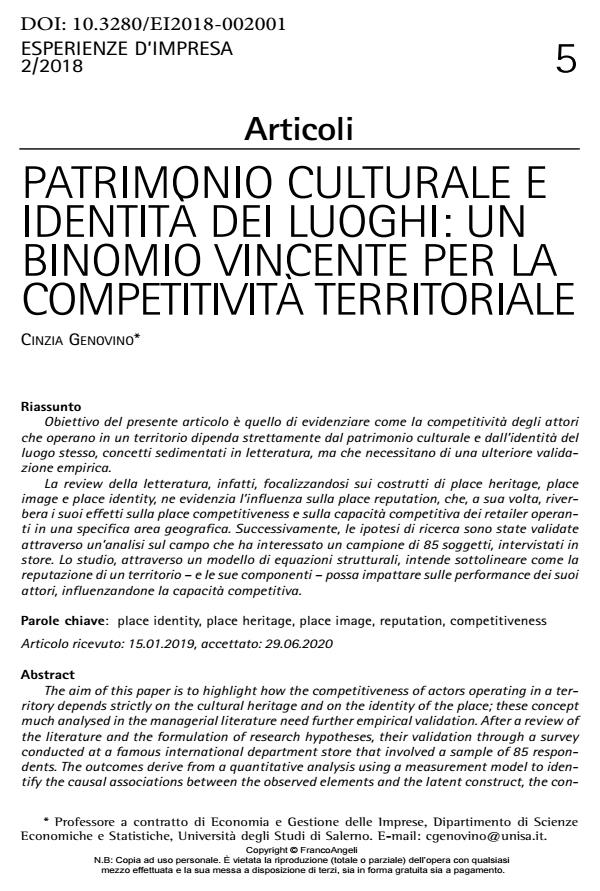Patrimonio culturale e Identità dei luoghi: un Binomio vincente per la Competitività territoriale
Journal title ESPERIENZE D'IMPRESA
Author/s Cinzia Genovino
Publishing Year 2021 Issue 2018/2
Language Italian Pages 16 P. 5-20 File size 355 KB
DOI 10.3280/EI2018-002001
DOI is like a bar code for intellectual property: to have more infomation
click here
Below, you can see the article first page
If you want to buy this article in PDF format, you can do it, following the instructions to buy download credits

FrancoAngeli is member of Publishers International Linking Association, Inc (PILA), a not-for-profit association which run the CrossRef service enabling links to and from online scholarly content.
The aim of this paper is to highlight how the competitiveness of actors operating in a territory depends strictly on the cultural heritage and on the identity of the place; these concept much analysed in the managerial literature need further empirical validation. After a review of the literature and the formulation of research hypotheses, their validation through a survey conducted at a famous international department store that involved a sample of 85 respondents. The outcomes derive from a quantitative analysis using a measurement model to identify the causal associations between the observed elements and the latent construct, the con struct validity is then tested with a confirmatory factorial analysis. This study aimed to examine whether the perceptions of employees and tourists, in the context of variables such as place heritage, its identity, the image and reputation of a place are driving factor for growth of the competitiveness of the place and its commercial enterprises.
Keywords: Place identity, place heritage, place image, reputation, competitiveness
Cinzia Genovino, Patrimonio culturale e Identità dei luoghi: un Binomio vincente per la Competitività territoriale in "ESPERIENZE D'IMPRESA" 2/2018, pp 5-20, DOI: 10.3280/EI2018-002001